I Dig Sports
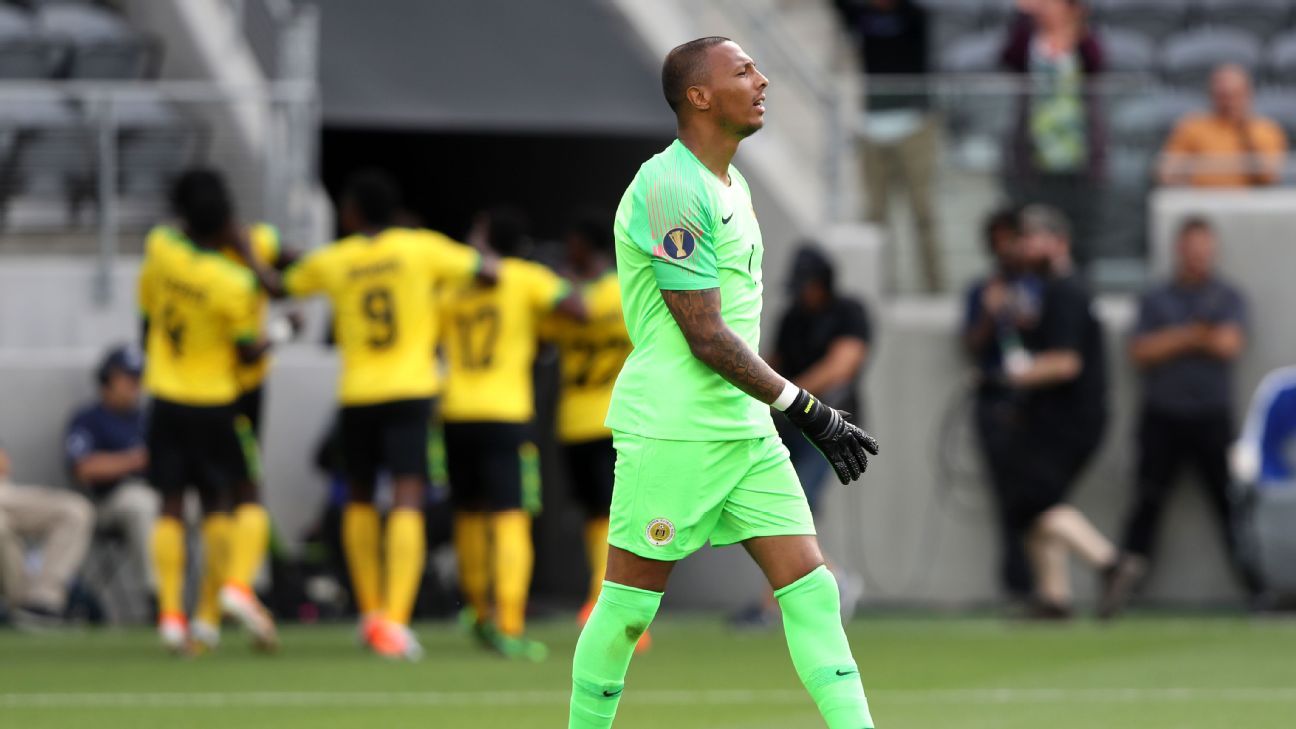
With goalkeeper Zack Steffen due to leave for English Premier League side Manchester City on Tuesday, the Columbus Crew announced the signing of his replacement on Friday.
Eloy Room, who starred in goal during Curacao's surprising run at this year's Gold Cup, will join the team when the international transfer window opens that day.
He'll fill one of the Crew's international roster slots.
"We are excited to have a player as experienced and proven as Eloy join Columbus Crew SC," general manager Tim Bezbatchenko said in a statement from the team.
"Eloy is a talented goalkeeper whose leadership and shot-stopping ability will help strengthen our club. We believe Eloy's background competing at the European and international level will allow him to contribute to Crew SC immediately."
Room, 30, last played professionally with PSV Eindhoven in the Dutch Eredivisie league after spending the bulk of his career with Vitesse of the same league.
Tagged under
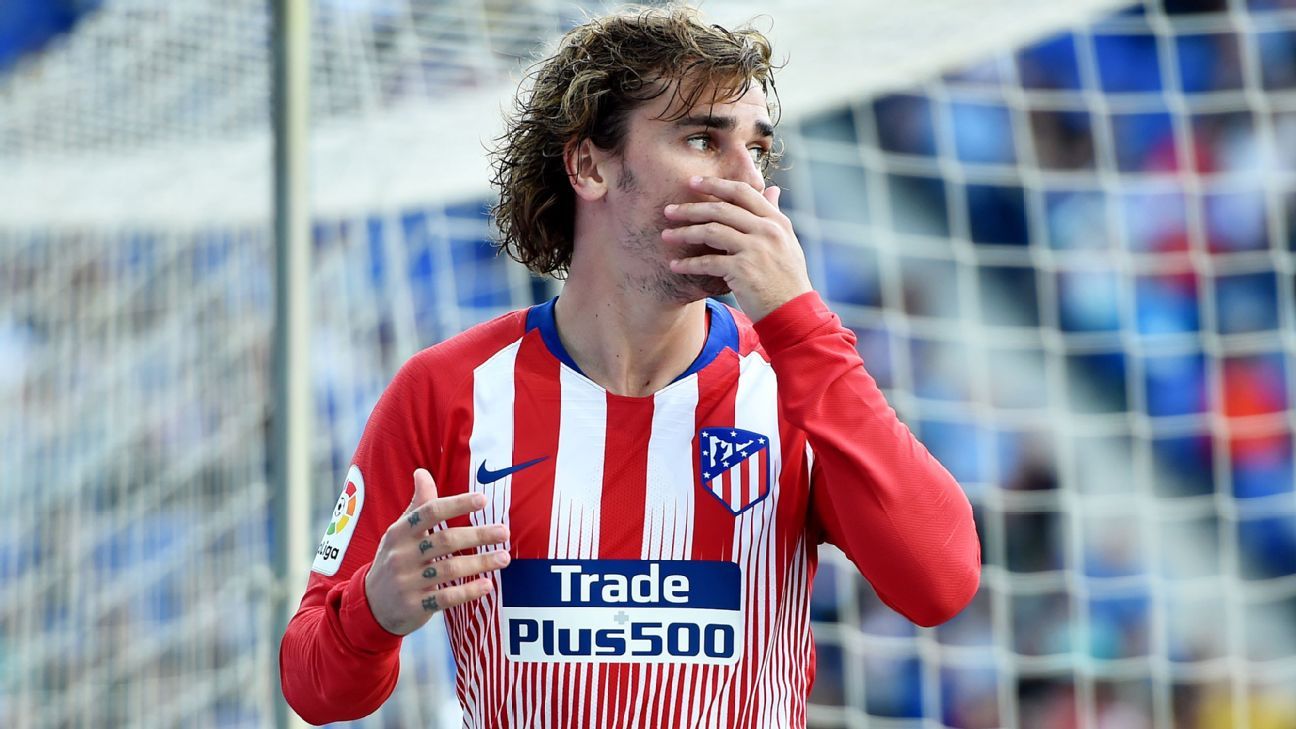
Atletico Madrid have publicly denounced the behaviour of both Antoine Griezmann and Barcelona, while saying they have turned down a request from the Catalan side to defer payment on the forward.
At the end of last season, Griezmann, 28, informed Atletico that he was leaving and Barca were expected to immediately trigger the clause when it dropped from €200 million to €120 million on July 1.
- When does the transfer window close?
- Bartomeu: Neymar wants to leave but PSG won't sell
- Atletico pay €126 million to sign 'New Ronaldo' Felix
However, nobody has yet visited the La Liga offices in Madrid to deposit the money, and Blaugrana president Josep Maria Bartomeu said at a news conference on Friday afternoon that "first contact" over the transfer took place on Thursday when Barca director Oscar Grau met with Atletico chief executive Miguel Angel Gil.
Soon after Bartomeu had finished speaking, Atletico responded with a lengthy and angry club statement which denounced the behaviour of both Barcelona and a player who remains under contract at the Wanda Metropolitano, and added that the request for "deferred payment" of the €120m release clause showed "disrespect."
"On May 14, Antoine Griezmann informed Miguel Angel Gil, Diego Pablo Simeone and Andrea Berta of his decision to leave our club at the end of the season," the statement said. "In the days that followed that meeting, Atletico Madrid learned that FC Barcelona and the player had reached an agreement in March, specifically in the days following the return match of our Champions League tie against Juventus, and that they had been negotiating the terms of the agreement since mid-February.
"Regarding president Bartomeu's statement today we wish to state that it is true that yesterday there was a meeting between Miguel Angel Gil and FC Barcelona CEO Oscar Grau, at Barcelona's request and that at that meeting, Mr. Grau expressed his intention, once the release clause of Antoine Griezmann's contract had decreased from 200 to 120 million euros, to ask for a deferred payment of the aforementioned amount of the clause in force as from July 1. Atletico Madrid's response was obviously negative, as we believe that FC Barcelona and the player have disrespected Atletico Madrid and all its fans."
Atletico's statement went on to say that they expected Griezmann to be at training on Sunday with his current teammates, while saying both the player and Barca had broken "basic rules of integrity" by negotiating a transfer last February when he and Atletico were still in competition against the Catalans on two fronts.
"Through this statement, Atletico Madrid wishes to express its strongest disapproval of the behaviour of both, especially FC Barcelona, for prompting the player to break his contractual relationship with Atletico Madrid at a time of the season when the club was involved in the Champions League tie against Juventus, as well as the league title race against FC Barcelona, something that we believe violates the protected periods of negotiation with players and alters the basic rules of integrity in any sporting competition, as well as causing enormous damage to our club and its millions of fans."
Tagged under

Barcelona president Josep Maria Bartomeu says he's aware that Neymar wants to leave Paris Saint-Germain, although he says the French champions do not want to sell the forward.
Bartomeu also confirmed that talks have begun with Atletico Madrid over the signing of Antoine Griezmann. Sources told ESPN FC earlier this week that Barca's interest in the France forward does not rule out a possible move for Neymar, who quit the Catalan club for PSG in a world-record €222 million transfer two years ago.
- Sources: Barca to add Coutinho in Neymar offer
- Sources: Barca can sign Griezmann and Neymar
Barca believe a deal would be viable financially, and sources have revealed to ESPN FC that Philippe Coutinho could even be used as a makeweight to bring the cost of the operation down. However, Bartomeu downplayed the idea of re-signing the Brazil international this summer due to PSG's reluctance to let him leave.
"We know that Neymar wants to leave PSG, but PSG don't want to sell him, so there's no Neymar case," Bartomeu said in a news conference on Friday.
Asked if, in an ideal world, he would like to sign him again, the president added: "We never speak about players from other teams."
It had been suggested in the Catalan press that Barca captain Lionel Messi had explicitly asked Bartomeu for Neymar to be brought back following a meeting between the two at the Argentine's house in May.
"Let's end that myth," Bartomeu said when asked if that was true. "Messi doesn't ask [for Barcelona] to sign certain players. He just wants a competitive team."
Bartomeu also closed the door on the idea of Ousmane Dembele leaving the club, possibly in a player exchange deal for Neymar, even saying the French winger is a better player than the Brazilian.
- When does the transfer window close?
"Dembele is a young, talented player who adds something different," he said. "Watching him play is a pleasure and when he's on the pitch you always want to see what he does. For me, he's better than Neymar."
Finally, Bartomeu explained that Barca have now opened negotiations with Atletico regarding the signing of Griezmann. There was a meeting in Madrid on Thursday between the two clubs' CEOs, Oscar Grau and Miguel Angel Gil Marin.
High-ranking sources at the Catalan club have told ESPN FC that Barca asked if they could pay Griezmann's release clause -- which dropped to €120m on July 1 -- in installments, while Atletico requested Nelson Semedo be involved in the deal.
However, Barca insist that Semedo is nontransferable. If they can't reach an agreement with Atletico, they will pay Griezmann's release clause after the weekend. Plans are already underway to present him at Camp Nou next week.
Tagged under

Manchester United's Paul Pogba is ready to leave the Premier League side in the summer with a transfer "in the process," the French midfielder's agent Mino Raiola told the Times newspaper.
Pogba, who moved to United from Juventus in 2016 for a then-world record fee of £89.3 million ($111.73 million), has produced inconsistent displays despite scoring 31 goals in 142 appearances in all competitions.
"Everyone within the club from the manager to the owner knows Paul's wishes," Raiola told the Times newspaper.
"Everyone knows the willingness of Paul to move on. We're in the process of that. Everyone knows what the feelings of Paul are."
British media has linked the 26-year-old World Cup winner with a move to Real Madrid, where he will link up with coach Zinedine Zidane, or a return to former club Juventus.
Pogba had suggested last month in Tokyo that now "could be a good time to have a new challenge somewhere else."
He is currently in New York this week on a promotional tour, with United's squad set to fly out to Australia shortly for a series of pre-season games that begin next week.
Raiola did not confirm if Pogba would make the trip.
"I can't tell you anything. I live day by day," Raiola added.
United kick off their new league campaign against Chelsea at Old Trafford on Aug. 11.
Tagged under
Avishka Fernando will be one of the future stars - Dimuth Karunaratne
Published in
Cricket
Friday, 05 July 2019 08:31

Going into their final round-robin match, Sri Lanka may be out of semi-final contention, and yet, there is a strong argument they have surpassed expectations at this World Cup. Ranked ninth in ODIs ahead of the tournament, they have won half the matches they've played so far, beating England, West Indies and Aghanistan, while losing to New Zealand, Australia and South Africa (their games against Bangladesh and Pakistan were both rained out).
Although India are firm favourites on Saturday, one more Sri Lanka win will secure them a mid-table position - fifth or sixth - something even optimistic Sri Lanka fans might have believed was beyond this team. And while Lasith Malinga has been the team's best player, the batting of Avishka Fernando in particular has been a revelation.
ALSO READ: Last chance for India's middle order to get it right ahead of the knockouts
Most expected Sri Lanka's World Cup to be disastrous. And although their ODI cricket remains poor, it seems in a better place than it did when they arrived in England.
"We've had a few positives out of this World Cup, with the openers and No. 3 having done well for us," Dimuth Karunaratne said. "Avishka Fernando is playing really well. He only got three games, but he showed what he can do - he can produce runs for Sri Lanka. He's one of the future stars."
While 21-year-old Fernando has been a particular cause for excitement, having hit Sri Lanka's first ODI hundred since January, and made 183 runs at a strike-rate of 107 through the course of his three innings, Sri Lanka have also had solidity at the very top of the order. Karunaratne and Kusal Perera have produced three opening partnershps worth at least 90.
The strength of performances are increasingly divorced from selection calls in Sri Lanka, but following years of rapid turnover in the opening positions, Sri Lanka perhaps have hope that the Karunaratne-Kusal Perera partnership can provide stability well beyond the World Cup.
"Kusal and I have different styles," Karunaratne said. "What the team expects from me is different - everyone expects me to bat through the innings. Kusal has been given the freedom to play his game. He can play his shots since he knows that I will play the anchor role from one end. If I get out, it gets difficult for him to play with freedom, so what I look to do is to rotate the strike and let him take on the bowling.
We have a good understanding and I don't race to catch up with his score. I have my limitations and I try to stick to that. We also have a good understanding running between the wickets. We have played lot of A team cricket together."
Sri Lanka have lost seven of the nine ODIs they have played against India in the last two years, but they had won their most recent match against them in England.. Chasing 322 at the Oval during the 2017 Champions Trophy, Kusal Mendis and Angelo Mathews struck fifties as Sri Lanka achieved the target with seven wickets in hand. Karunaratne hoped memories of that win would spread vibes within his team.
"India are a top team, and you can't afford to make mistakes against a side like that. But we have beaten them in England in the Champions Trophy, and some of those players who did that are in this squad as well. I hope we can take inspiration from that win and play well."
Tagged under
Smith, Warner's records will speak louder than one-off incident - Du Plessis
Published in
Cricket
Friday, 05 July 2019 09:41
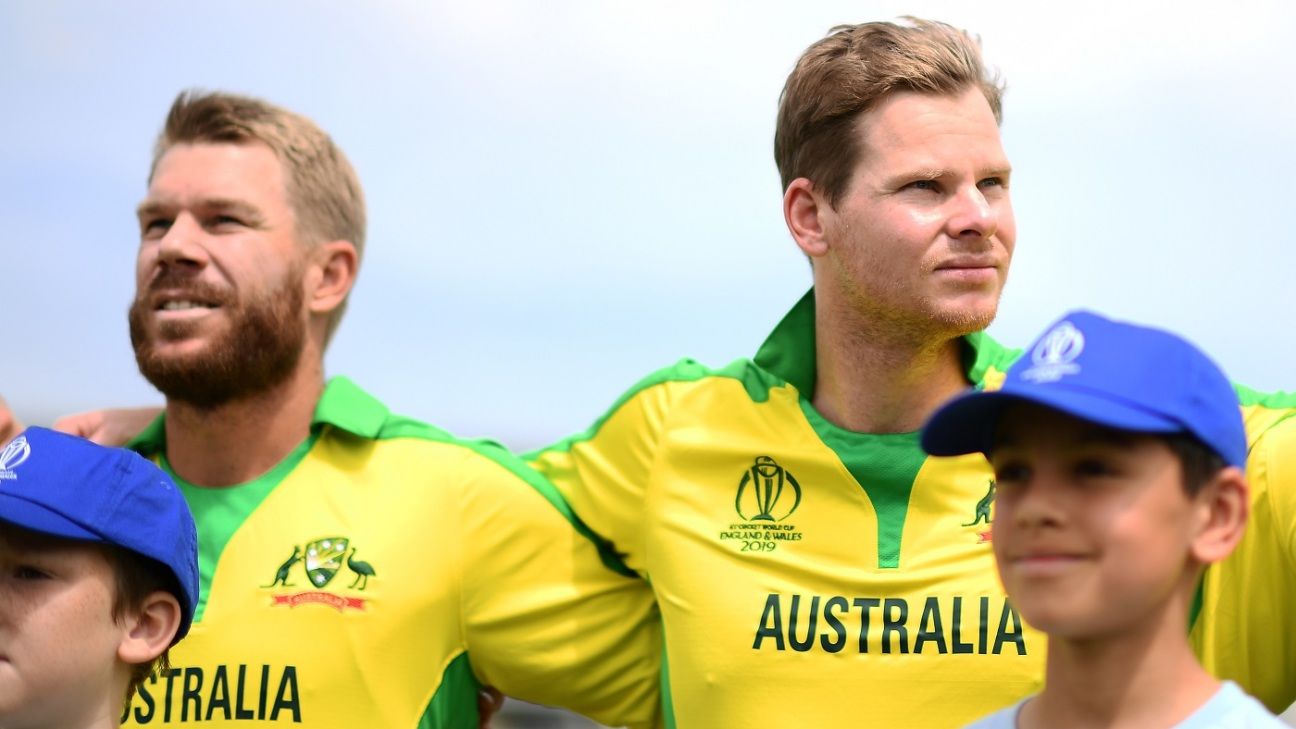
Faf du Plessis believes Australia "have learned" from the ball-tampering scandal and that David Warner and Steven Smith will be remembered for far more than that incident.
South Africa and Australia meet on Saturday for the first time since Smith and Warner returned to the international game following their suspension for their part in the episode at Newlands in 2018.
But du Plessis, the South Africa captain, insists his team will not be bringing up the incident on the pitch and reckons "the Australia culture" now "looks likes it is really good."
"I think their records and their performances will speak much louder than a one-off incident," du Plessis said. "I don't think the game will remember them for that.
"Any player as good as them that is taken away from playing at the highest stage will come back extremely motivated. And I think you can see that the two of them are and they are doing well and scoring runs. They are extremely hungry to perform at international cricket again.
"The fact that Australia's been boosted by the two guys coming back into their batting line-up has made them a pretty complete team. There's not many holes in their team now and they've played some really good cricket at this World Cup.
"They are probably better - I won't say people - but if you look at them now you can see as a team, the Australian culture looks like it's really good. So they have learnt from that and they have made themselves stronger for it.
"I think that's a good sign for anyone. All of us make mistakes. It is about how you learn and how you move forward."
South Africa and Australia have played each other since the Cape Town incident. But du Plessis says there was no attempt from his team to try to utilise the episode to try and unsettle their opponents, while Australia were also happy to "get on and play the game."
"There was certainly no talk about the past or bringing up comments," du Plessis said. "As I said back then, and I will say it now, I believe as a team we are a pretty low-key team when it comes to verbals.
"Australia is certainly my favourite team to play against. It's a great competition between two fierce nations"
"We just try and get on and play the game and certainly the last few games playing against Australia that is exactly the same, the same from them."
When the World Cup schedule was announced, there was a thought that this game - the final group match - might prove pivotal in deciding which sides qualified for the semi-finals. As things have transpired, however, Australia are certain to qualify and South Africa are certain to go home. But du Plessis feels that such is the natural rivalry between the nations that both sides "give it everything."
"For me playing against Australia has always been a great battle because you face a team that's always very competitive. That is what I love about playing against Australia.
"They are a very, very confident team probably right now and we are probably just are a little bit off where we need to be. But, in saying that, once we cross that rope, playing against Australia is certainly my favourite team to play against.
"It's a great competition between two fierce nations. So, yes, they are looking pretty where they are sitting in terms of the World Cup, but we are still going to make sure we give it everything."
Tagged under
Shaheen Afridi's record haul not enough to pull Pakistan through
Published in
Cricket
Friday, 05 July 2019 11:43
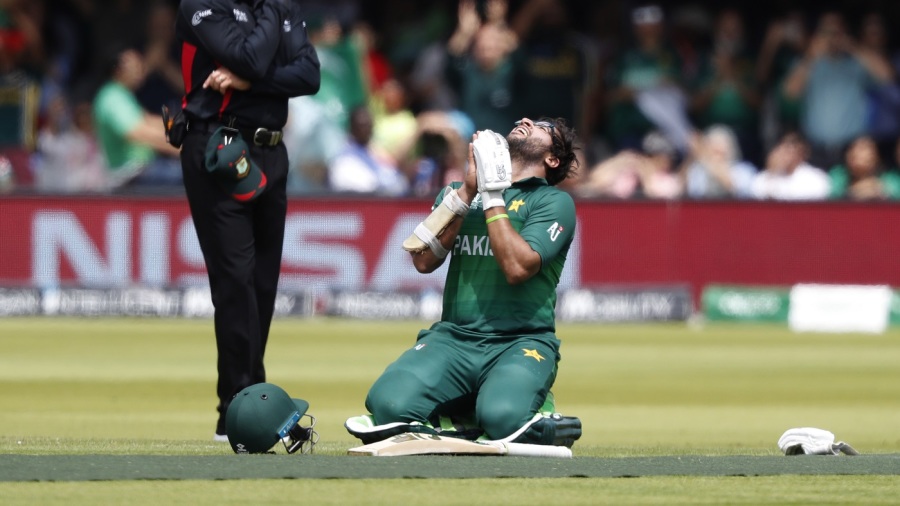
Pakistan 315 for 9 (Imam 100, Babar 96, Mustafizur 5-75) beat Bangladesh 221 (Shakib 64, Shaheen Afridi 6-35) by 94 runs
The ridiculous fantasies of engineering a win cricket simply isn't created to throw up aside, this was an excellent Pakistan performance, subduing a side that three weeks ago, most would have fancied to turn them over. It means they become the first team to bow out at a World Cup with four consecutive wins, also ending a streak of four successive Bangladesh victories over them.
Watch on Hotstar (India only): How the Bangladesh wickets fell
Pakistan needed to win by a record margin, of the kind Uganda women handed out to Mali women - posting 314 and then skittling them for 10. To give you a sense of how desperately flimsy the strand by which Pakistan's hopes hung, that would not have been enough. They batted first and put on 315; they needed to restrict Bangladesh to below 8.
While that was never on anyone's mind, what Pakistan did find was a gem in Shaheen Afridi, who eclipsed Shahid Afridi to pick the best figures for Pakistan in World Cup - 6 for 35 - as Pakistan bowed out in front of a sea of green - both set of fans included - with a 94-run win at Lord's.
The win was set up by Imam Ul Haq, who got himself on the famous Lord's board with a sixth ODI century. Babar Azam missed joining him, but made a sublime 96 as Pakistan posted 315 for 9. With the ball, there was nothing ordinary about Shaheen Afridi, the youngest man to take a five-fer at a World Cup, his six wickets cleaning up Bangladesh inside 45 overs. Only Shakib Al Hasan, who finished the World Cup with 606 runs, offering any sort of steel with a industrious 64.
WATCH on Hotstar (India only) - Highlights of Imam-ul-Haq's ton
Pakistan won the toss and opted to bat - batting second would have eliminated them straightaway - but any ideas of galloping to a 400-plus evaporated quickly. Bangladesh intelligently opened up with offspinner Mehidy Hasan to counter Fakhar Zaman's threat. He would concede only six runs in the four overs he bowled while the opener was at the crease, and when he holed out at point to Mohammad Saifuddin, he had scored 13 off 31. Hardly the stuff of 400-exceeding totals, that.
To their credit, Imam and Babar decided to play for a morale-boosting win, rather than aiming for the impossible, negotiating Shakib's spin threat expertly. It also helped that Mashrafe Mortaza, Bangladesh's captain with a wonky knee and in his last lap, was inaccurate with his lines, thereby allowing them to target him.
Him being hit out of the attack meant Saifudin and Mustafizur Rahman brought back somewhat earlier than had been planned. During the course of his innings, Babar became the most prolific run-scorer at a World Cup for Pakistan, surpassing Javed Miandad's 437 runs at the 1992 World Cup. He fell four runs shy of what would have been a richly deserved hundred, but by then, Pakistan were well on their way to a potentially match-winning score.
Imam at the other end completed his, but trod on his stumps the very next ball, triggering a collapse which meant they couldn't quite launch at the end. Imad Wasim was left to the usual cameo-playing role, one that he has begun to perfect with impressive consistency. It took Pakistan past 300; they posted the fifth-highest score at Lord's in ODI history, and it always looked a touch too much for a Bangladesh side so heavily reliant on Shakib.
The man himself wouldn't disappoint, notching up yet another half-century, his seventh this World Cup, and going past 600 runs at the tournament, a feat bettered only by Sachin Tendulkar and Mathew Hayden. But with Soumya Sarkar and Tamim Iqbal departing early, and Mushfiqur Rahim cleaned up by a vicious Wahab Riaz inswinger, there was always the sense this game would cease to be competitive from the moment Shakib was dismissed.
With the asking rate, as well as the pressure on his admirably broad shoulders, rising, he nicked off to Sarfaraz Ahmed to give Shaheen his third wicket. It brought down the curtain on one of the all-time great World Cup campaigns, but in the process, also wound up Bangladesh's chase. There was more cheer for Shaheen and Pakistan, though.
Shaheen, who has improved with every game that Pakistan have won over the past fortnight, became the youngest player to take a five-for at a World Cup, cleaning up the lower order in much the same way he had three of the top five.
Tamim Iqbal hasn't had the best World Cup, despite coming into this tournament as the highest Bangladesh run scorer of the past four years. It was a bad time to run into Shaheen, who, after a slow start to the tournament, had begun to ignite. On Friday, he was molten hot, but it was ice-cool wiles rather than fiery passion that broke through the Bangladesh opener, a slower delivery deceiving him all ends up.
Liton Das fell to another slower delivery, this one so well disguised it might have fooled most Secret Services. He could only scoop it to short extra cover, and that was the moment Shakib began running out of partners. It meant a change in attitude from the Bangladesh talisman, and once he found himself forced into an uncomfortable position off one that seamed away, his, and Bangladesh's, fate was sealed. Mahmudullah was felled by a yorker shortly after, and the tail was never going to be a match for him.
Shaheen's figures read a record-breaking 6-35 in 9.1 overs. They might not have been the records Pakistan were looking to break, but in Babar, Imam and Shaheen, they have the ingredients for a more successful World Cup recipe in four years' time.
Tagged under
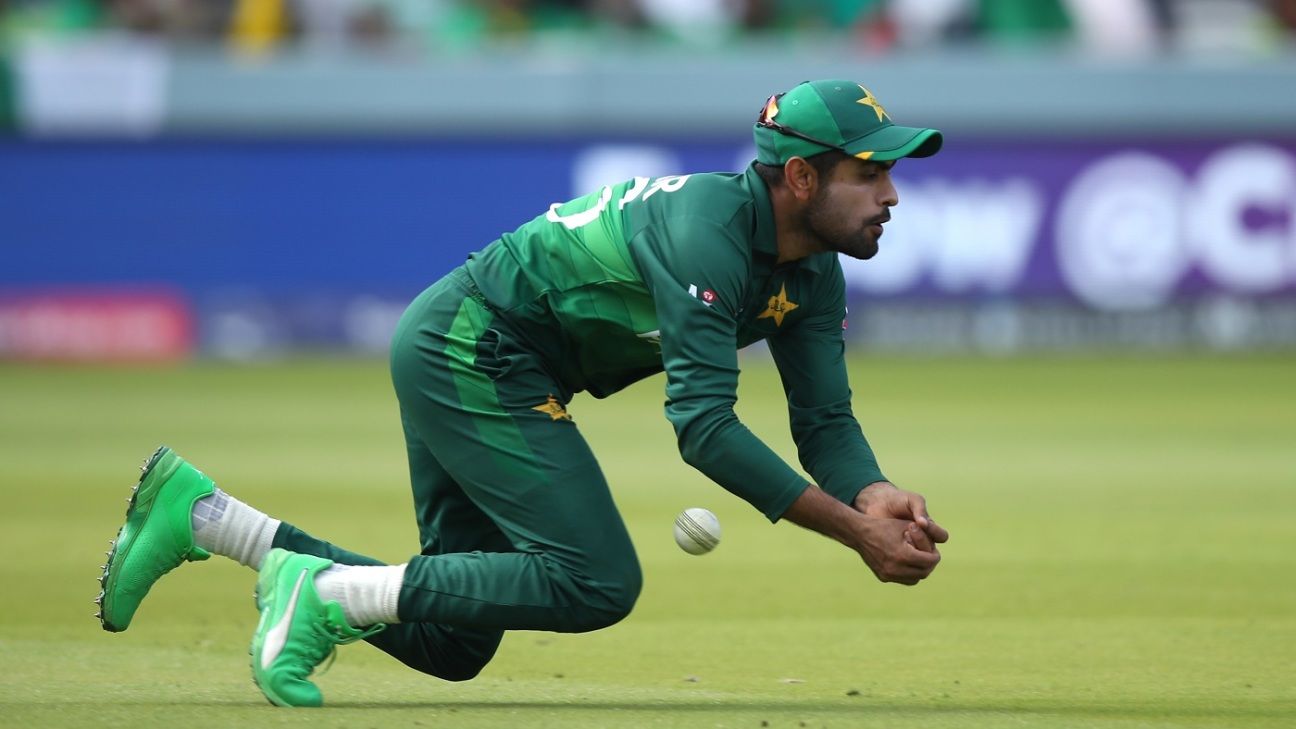
Mashrafe Mortaza, the Bangladesh captain, underlined their poor bowling in the first 20 overs and fielding as the main reason for their World Cup exit.
Statistically, Bangladesh were the worst bowling side in that phase of the tournament. In addition, they also dropped eight catches. A reason for these lapses was their miscalculation of ground dimensions, which didn't help cut down angles.
As he sat down to address his last World Cup press conference, an apologetic Mashrafe felt the team didn't do justice to Shakib Al Hasan's. The allrounder finished the tournament with 606 runs along with 11 wickets.
"Little things made a huge difference," Mashrafe said "Shakib (Al Hasan) was absolutely beautiful. Batted at three, did what he could do. I really feel sorry for him. The way he played, the team could have been standing in a different zone. I think he is one of the best World Cup performers of all time. Still, we couldn't make the semifinals."
Then he got down to the specifics. "Bowling has not been up to the mark, starting from me and the others, especially the first 10 or 20 overs," he lamented. "We needed to pick wickets. Some matches the fielding really cost us, ground fielding especially. It helps the bowlers when fielders back you up. Catches were dropped, it happens, but when it keeps happening questions will of course be asked."
Mashrafe felt fielding had been a concern all along, calling it the single-biggest difference between Bangladesh and the semifinalists. "I think players tried their best. We could improve in a few areas. We knew our weaknesses. But we could not prove that weaknesses could be improved.
"But the way we played, we could have finished a little better. If we could have finished the match on a good note, we could have said luck wasn't with us. A few things we have been really good, but few has not been with us.
"Going forward we need to be concerned - if you ask me for this tournament, bowling is a big issue. If we play in Asia, we are a far better bowling side. Fielding has been a concern throughout my career. When someone gets partnerships, we go down and down. We have to improve in fielding."
Tagged under
Du Plessis admits 'concern' over South Africa player drain as he considers international future
Published in
Cricket
Friday, 05 July 2019 11:31
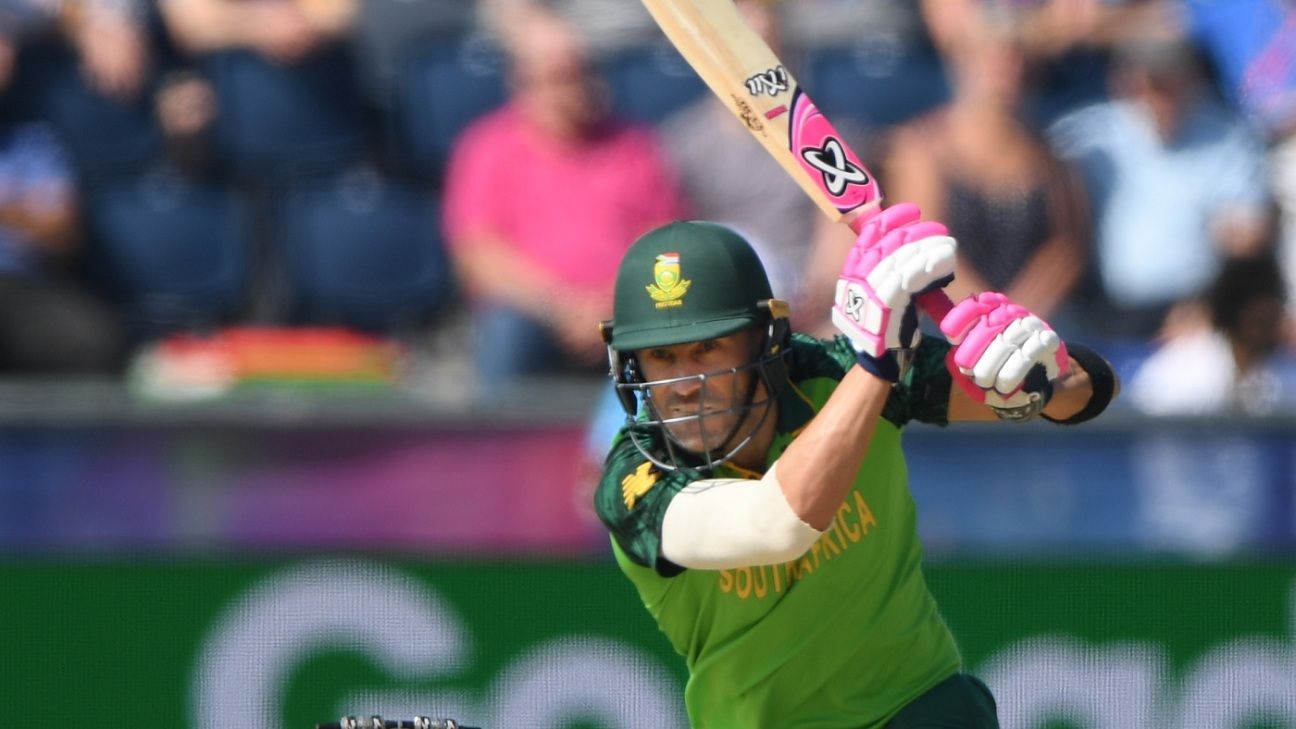
South Africa captain Faf du Plessis believes it would be "amazing" if the ICC was to act on Jason Holder's suggestion of introducing a minimum wage into international cricket. However, du Plessis also conceded it was "a long way from happening", and said that he would be taking time after the World Cup to weigh up his own future as a South Africa player.
Holder, the West Indies captain, made the suggestion in February following Duanne Olivier's decision to sign a Kolpak deal Yorkshire. He warned that unless "something is properly done to keep players a bit more grounded financially" it could become hard to maintain the quality of international cricket, and he revealed he had held discussions with the Federation of International Cricketers' Associations (FICA) on the subject.
Du Plessis was positive about the possibility of such an initiative, with the issue of losing players to the T20 circuit or Kolpak deals remaining an "area of big concern" for CSA. But in accepting that South Africa could lose more players once the tournament has ended, he admitted he had not yet come to a decision about his own career. JP Duminy and Imran Tahir have already announced plans to retire from international cricket following South Africa's final World Cup game on Saturday.
"There are almost two groups of players when it comes to South African cricketers," he said. "There's your Test players - and for them the Kolpak option is the dangling carrot - and there are your white-ball specialists, where the T20 circuit around the world [is the carrot]. Both of those areas are a big concern for cricketers in South Africa.
"Looking at the one-day side, your players that will move on from the Proteas would potentially move on to the T20 circuit, maybe bar one or two, but that is generally where the opportunities lie for the white-ball players. I think, naturally, with some of the guys finishing, they'll do that. That will become the biggest issue for us to try and stay away from for all players. And that's including myself.
"My plan was to commit fully to the World Cup and not even think of anything else further than the World Cup because I didn't want my mind to start drifting into the future. I wanted to be completely present in this World Cup.
"Right now is possibly not the best time to be making decisions because you are disappointed - I won't say emotional - but you don't want to be in this mode when you are making career decisions. So, for me, it will be a case of taking some time off and reflecting on what the future looks like for me; what's my purpose going forward; is it still playing all three formats for South Africa? Those are the things that I would need to consider.
"I feel in terms of my own game, the last year is certainly the best I have ever played. I still believe I'm on top of my own game, so performance-wise there is no question marks there.
"It's just making sure that there's a lot of purpose to what I'm doing. I've had a huge belief the last year and it's been very easy for me to not even consider anything else because my purpose in captaining this team has been so strong. I didn't even think of anything else.
"So, in the two or three weeks after this tournament, I will have a real look and see what the future holds for me."
The route of South Africa's problems are economic. The cricket board is simply unable to match the money on offer in T20 leagues or county cricket and has seen a steady stream of departures in recent years. And while du Plessis acknowledged that South Africa are not alone in suffering with such issues - he referred to all nations other than England, India and Australia as "second-tier nations" - he did not feel any further distribution of wealth is likely.
"It would be great for the rest of the teams if you could do that," du Plessis replied when asked if he would welcome the ICC subsidising international salaries where appropriate. "If I had that much power to say that to the ICC I think I would have said it a long time ago. That is the perfect world, but we don't live in a perfect world.
"Sri Lanka, New Zealand, West Indies and Pakistan: I think all of us fall into the same category, like maybe your second-tier nations and then you get your top tier which is a little bit different. West Indies are a great example. They probably are the worst off and that is why they have lost so many players to the circuit.
"I think England, Australia, India will always be the higher-paid nations. It is easier for the guys who are playing for England or Australia or India to remain in their countries and just play their cricket there. Obviously the currency is very strong but also the packages that they get paid are obviously a lot different to your smaller nations.
"If that changes, it will be amazing for the rest of the world, but I think it's a long, long way from happening."
Tagged under

Former New England Patriots linebacker and current ESPN analyst Tedy Bruschi is recovering after suffering a stroke Thursday, his family said in a statement.
"He recognized his warning signs immediately: arm weakness, face drooping and speech difficulties. Tedy is recovering well," according to the statement issued Friday. "Tedy and his family thank you for your ongoing encouragement, and kindly ask for privacy at this time."
Bruschi, 46, previously suffered a stroke in 2005, while he was a member of the Patriots. He missed the first six weeks of the season, then returned to play eight months after the stroke.
"I had 366 tackles in the NFL as a stroke survivor," he said upon his retirement. "And I'm very proud of that."
Bruschi, a linebacker who was elected to the Pro Bowl in 2004, played 13 seasons for the Patriots. He retired before the 2009 season and joined ESPN shortly afterward.
"Tedy has the complete support of ESPN and we wish him a speedy recovery," the network said in a statement.
The family said Bruschi was taken to Sturdy Memorial Hospital in Attleboro, Massachusetts.
Bruschi created a running club called Tedy's Team to raise funds and awareness for the American Stroke Association. He has run the Boston Marathon three times, including in 2019.
Tagged under



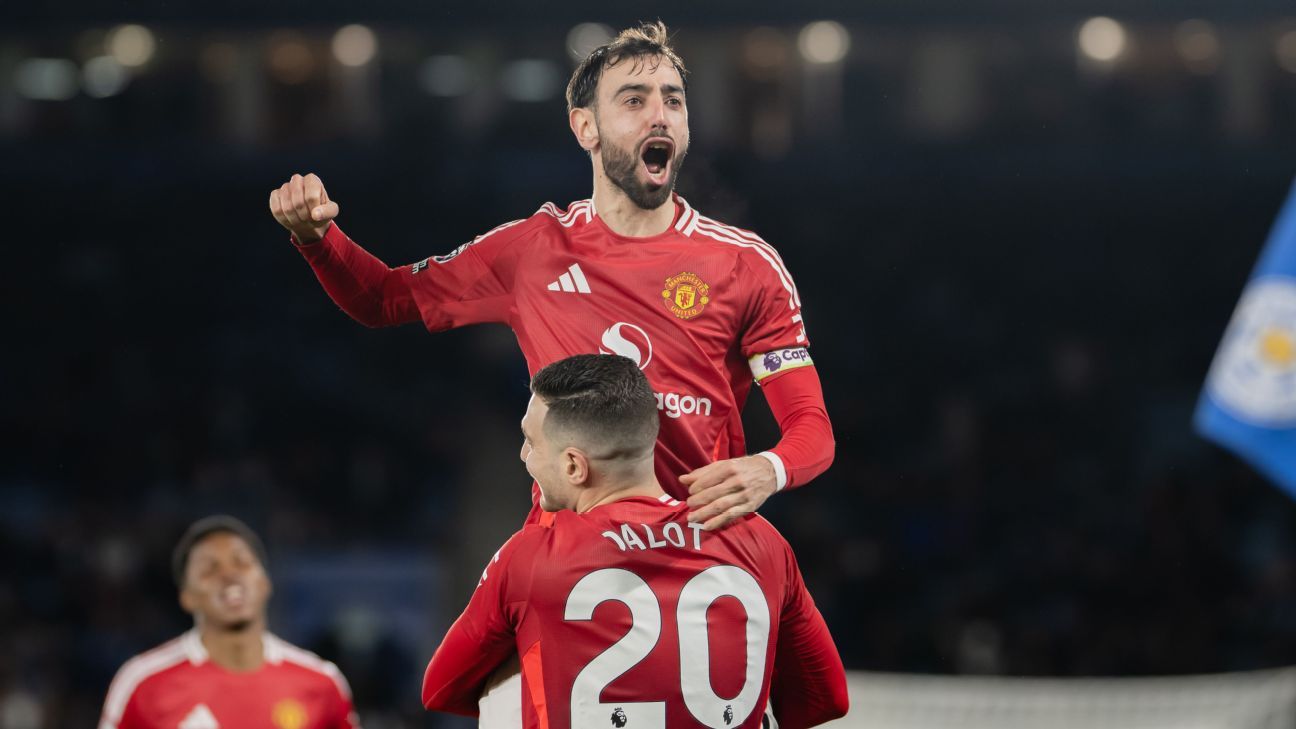











 Phone: (800) 737. 6040
Phone: (800) 737. 6040 Fax: (800) 825 5558
Fax: (800) 825 5558 Website:
Website:  Email:
Email: 






